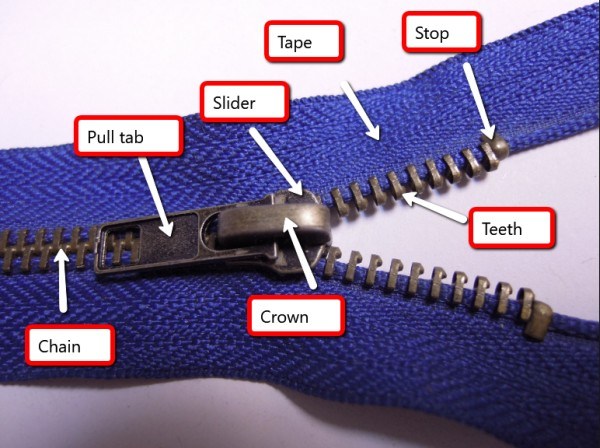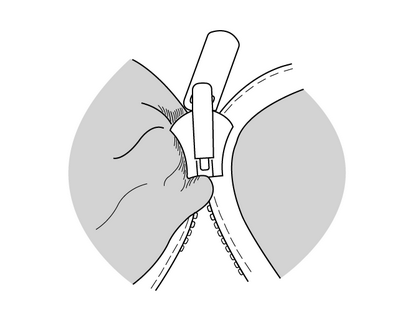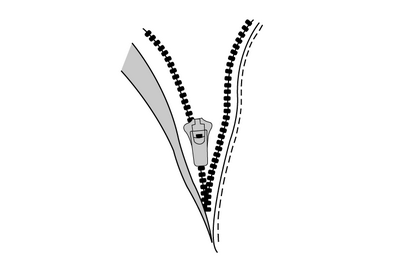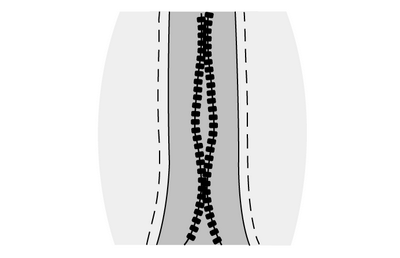Have you ever been in a rush, put on your coat and struggled with your zipper, only to have it stuck halfway up your jacket? Or it’s torn a hole into the surrounding material? Now imagine the same happening with your tent…
So why DO zippers fail? How does lubrication help? Let’s look at why you should be lubricating your zippers regularly.

HelloTrail® is reader-supported. We may earn a commission, at no additional cost to you, on purchases made from our expert chosen links.
How to Make a Zipper Glide Smoothly
Keep Your Zippers CLEAN!
Your zippers won’t glide smoothly if they are full of dirt, dust, or even rust from being exposed to moisture. You should do a thorough cleaning of ALL zippers on your tent once you get back from the campsite.
Wash the zippers with warm water and gentle soap to free up any dirt and grime between the teeth. Scrub with caution using a washcloth and rinse them to get rid of any soap residue.
Then leave the tent out to dry.
Pro Camper’s Tip
If you are in a pinch, try using canned air – like the one you use to clean keyboards – to clean the teeth and the slider.
After cleaning, you’ll want to add lubricant to help the zipper slide easier. Lubrication allows the slider to interlock the teeth, allowing you to avoid the potential issues that we talked about earlier.

What Can I Use to Lubricate a Zipper
Here are some everyday household items you can use as diy zipper lubricant:
- Candle: Rub a white candle along each set of teeth. Move the slider up and down to spread out the wax. Then, wipe off any excess with a paper towel or cloth.
- Lip Balm: If you’ve got a spare stick of lip balm hanging around, use it to care for your zipper. Follow the same method as the candle.
- Olive Oil: Place a few drops of olive oil inside the slider (not too much to make a mess). Then work the slider up and down the teeth to spread the oil across the chain. Wipe off any excess.
- Pencil: For more sensitive zippers, you may want to try using a graphite pencil. Rub the graphite up and down the teeth and it will act as a lubricant for the slider. Crayons also work.
- Windex: The same Windex you use to clean your windows and mirrors acts as an excellent lubricant for zippers. You can spray the zipper and fabric around it with the cleaning solution and work the slider up and down the teeth. Be careful not to use this method on materials that you deem sensitive, as discoloration can occur.
Or for less than the price of a happy meal you can buy the best zipper lubricant from Gear Aid.
Take a Deep Breath and Handle With Care
Finally, remember that zippers on most outdoor products are made of plastic, not the top-of-the-line kind. Don’t turn into The Hulk every time you enter and exit your tent. Only grab the pull tab to use zippers.
If the slider gets snagged on the fabric, take a deep breath. Patience and finesse will get it free, not destruction.
Anatomy of a Zipper
We tend to use zippers every day but never stop to think about how they work. In general, a zipper joins two separate pieces of fabric, but exactly how? Let’s learn some proper terminology to find out.

- Slider: The part of the zipper that moves up and down
- Teeth: The stationary aspect of a zipper sewn on to each end of the fabric
- Insertion Pin: The access point that allows the slide to join the teeth
- Stop: The top and bottom portions of the teeth that prevent the slider from moving further
- Pull-tab: The part of the zipper you grab when you zip-up
- Crown: Where the pull-tab connects to the slide
- Tape Extension: The fabric on either side of the teeth that connect them to the clothing/tent
- Chain: The entire ensemble when zipped up
When the slider is pulled onto the insertion pin, it wedges the teeth together at an angle through a Y-shaped channel. Seriously! Check it out the next time you zip up your pants.

The teeth, which vary in shape, become interconnected and allow the fabric to join together.
4 Reasons Why Zippers Fail
Okay, you’ve learned the anatomy of a zipper, so now let’s dive into why these revolutionary mechanisms fail and how you can fix them.
1. The Slider Gets Stuck in the Fabric

Ugh! This is my most common and most frustrating zipper issue.
A little piece of fabric gets stuck in the teeth and then the slider gets stuck.
Rather than tugging on your camping tent zipper to get the fabric unstuck, put some lubricant (vaseline, soap, etc.) on each side of the teeth where the slider jams.
Work the zipper back and forth, reapplying lubricant when necessary until it’s finally free. We’ll get more into this later.
2. The Slider Falls Off
Through stress and strain, sometimes the zipper slider will break or fall off.
To fix it, you’ll have to remove the slider from the entire chain with a pair of pliers.
Then, you’ll need to replace the slider altogether. Contact the manufacturer for specific sizes.

3. The Teeth Do Not Close

Sometimes even after you zip up, the teeth will not stay together, defeating a zipper’s purpose.
This occurs because the teeth are worn out or bent, which compromises the locking mechanism.
Inspect the individual teeth to ensure everything lines up. If any of them are out of place, bend them back with pliers.
If the problem persists, you may have to replace the slider.
4. The Pull-Tab Breaks
One issue usually ignored is when the pull-tab breaks since you can still operate the zipper.
But, instead of trying to grasp the crown or the slider, you can use a paperclip, piece of string, or key ring to replace the pull-tab.
Wrapping Zipping It Up…
Whether it’s your $50 jacket or $500 tent, caring for your zippers is vital to ensure the life of your possessions. Remember to clean them, lubricate them, and treat them with care.
I hope you’ve learned some valuable tips and tricks on how to make a zipper work better. Don’t forget to… Zip Up!

